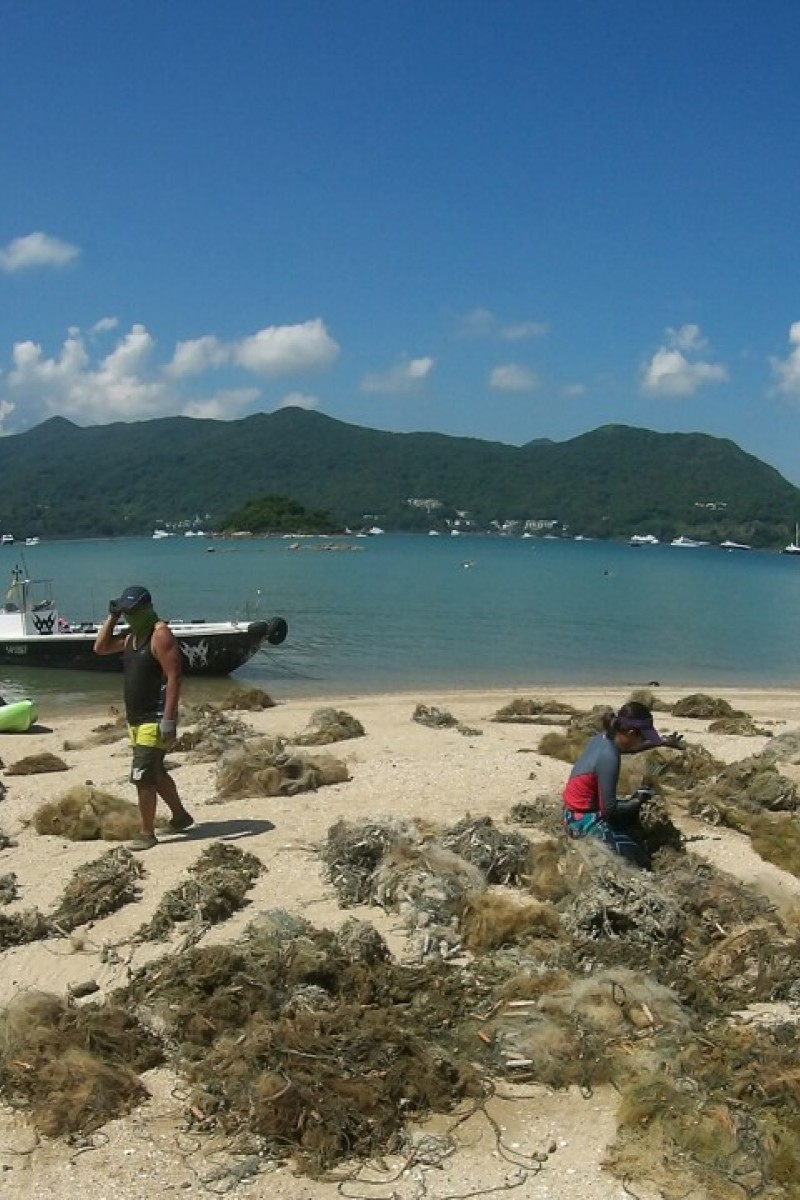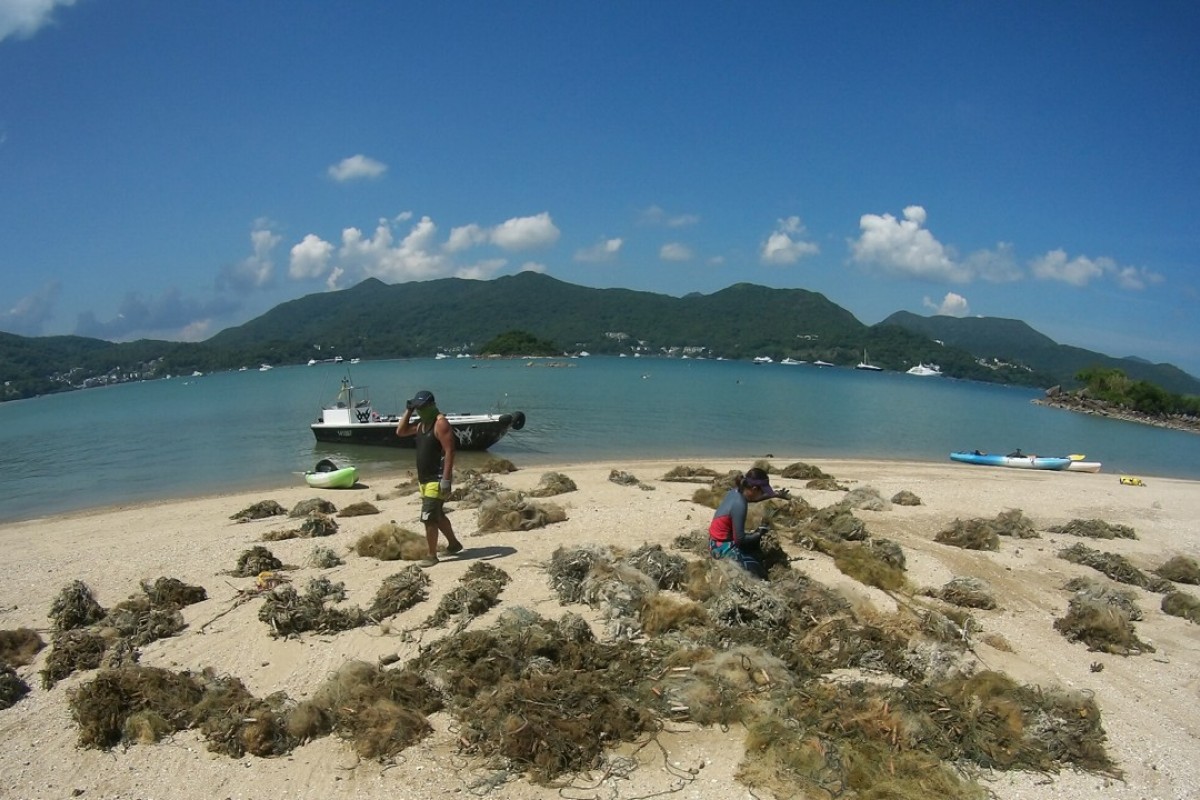
Discarded fishing nets threaten Hong Kong’s marine life: here’s what volunteer group Ghost Net Hunter is doing about it
Fishing nets are lost or get thrown into the ocean deliberately, and these volunteers use their own money and time to retrieve them
 Many nets are thrown into the water where they become "ghost nets".
Many nets are thrown into the water where they become "ghost nets". When a fishing net gets lost at sea, or is dumped into the ocean, it becomes a “ghost net” – a danger for everything that lives in the water.
Ghost Net Hunter (GNH) is a volunteer organisation that dedicates time, at least once a week, to looking for and removing abandoned fishing nets from the waters around Sai Kung. Since it was set up last year, GNH has cleared 90 per cent of the nets two metres below sea level around Yeung Chau island.
Kitti, the creator of the organisation and who does not want to reveal her last name, tells Young Post that a typical marine rescue operation usually involves three GNH members. They will rent a kayak each out of their own pocket, and paddle to islands around Sai Kung. There, they put on snorkels and dive into the water, and look for ghost nets. If they find any, they drag them up to the kayak, or to shore, and cut them up to free any trapped sea creatures.
When asked how long it takes to deal with one ghost net, Kitti says: “There [might be] 20 crabs trapped in a net, and it takes up to 10 minutes to untangle one.” The remains of the net are then placed on an island for removal.
“When we have tonnes of nets [ready for collection], they are taken to Sai Kung Pier, where the Food and Environmental Hygiene Department (FEHD) take them away.” When this happens, Kitti adds, they need at least 10 volunteers to help move the nets.
Kitti says, in her experience, the ghost nets seem to fall into three main categories. Some nets are very old, and faded looking. They might be ones thrown away by fishermen.
“They are much larger than modern nets, with cross knots. They are probably from decades ago,” the highly experienced scuba diver says. Other nets are small in size, and found in places the group have cleared up before. Kitti thinks that they might have been thrown away by people who go fishing for fun.
“I’ve seen quite a few people throwing nets into the sea in Sai Kung,” she adds. Many of the nets GNH finds are gill nets – a large type of net – possibly used by boat owners with registered fishing license.
“The nets they cast have a relatively simple structure, but it doesn’t mean they are not harmful [to marine life],” Kitti says. The gill net holes are very small, Kitti adds, which means plenty of fish get trapped in them.
The ghost net hunter says that she often feels dissatisfied with the lack of interest shown by the government in helping GNH to clean the ocean.
“It takes a week to make an appointment with FEHD before they will come to … pick up the nets,” she says, adding that the organisation’s plans and operations can change at any time depending on the weather, and how windy it will be.
The FEHD, Kitti says, are so difficult to reached by phone that she’s written a complaint letter about it.
“I was also invited to meet with the Agriculture, Fisheries and Conservation Department about improving marine lives and dealing with nets in July. However, they’ve taken no further actions since then.”
So, as a teenager in Hong Kong, what can you do to save the ocean? The environmental activist suggests that readers can help by “fulfilling their own duties as a responsible citizen”.
“Help by cleaning a beach, or, at the very least, make sure you throw away your rubbish after a school picnic or a barbecue in a country park instead of leaving it there.” Being responsible for what you generate as waste is very important.
“Inexperienced people should not try to free marine life caught in nets, either on shore or underwater,” she adds. “It’s very dangerous, and requires a high level of skill.” However, those that want to get involved can help the volunteers collect the nets at the pier.
Although GNH doesn’t have a lot of financial aid, resources, or volunteers right now, Kitti is hoping that will change in the future. She wants to get a license and register GNH as a non-governmental organisation, so that she and her team can raise money for large scale net-hunting operations.
“We want to reach the seabed [and clear more ghost nets]. But, given that there’s so much to do already, that won’t be any time soon.”
Edited by Ginny Wong
